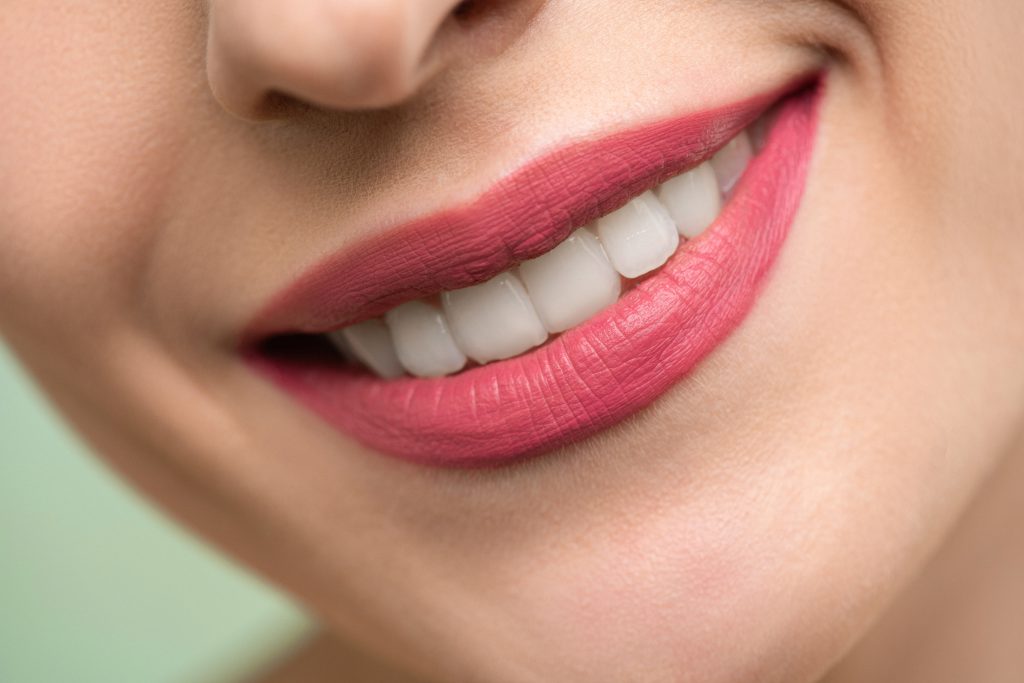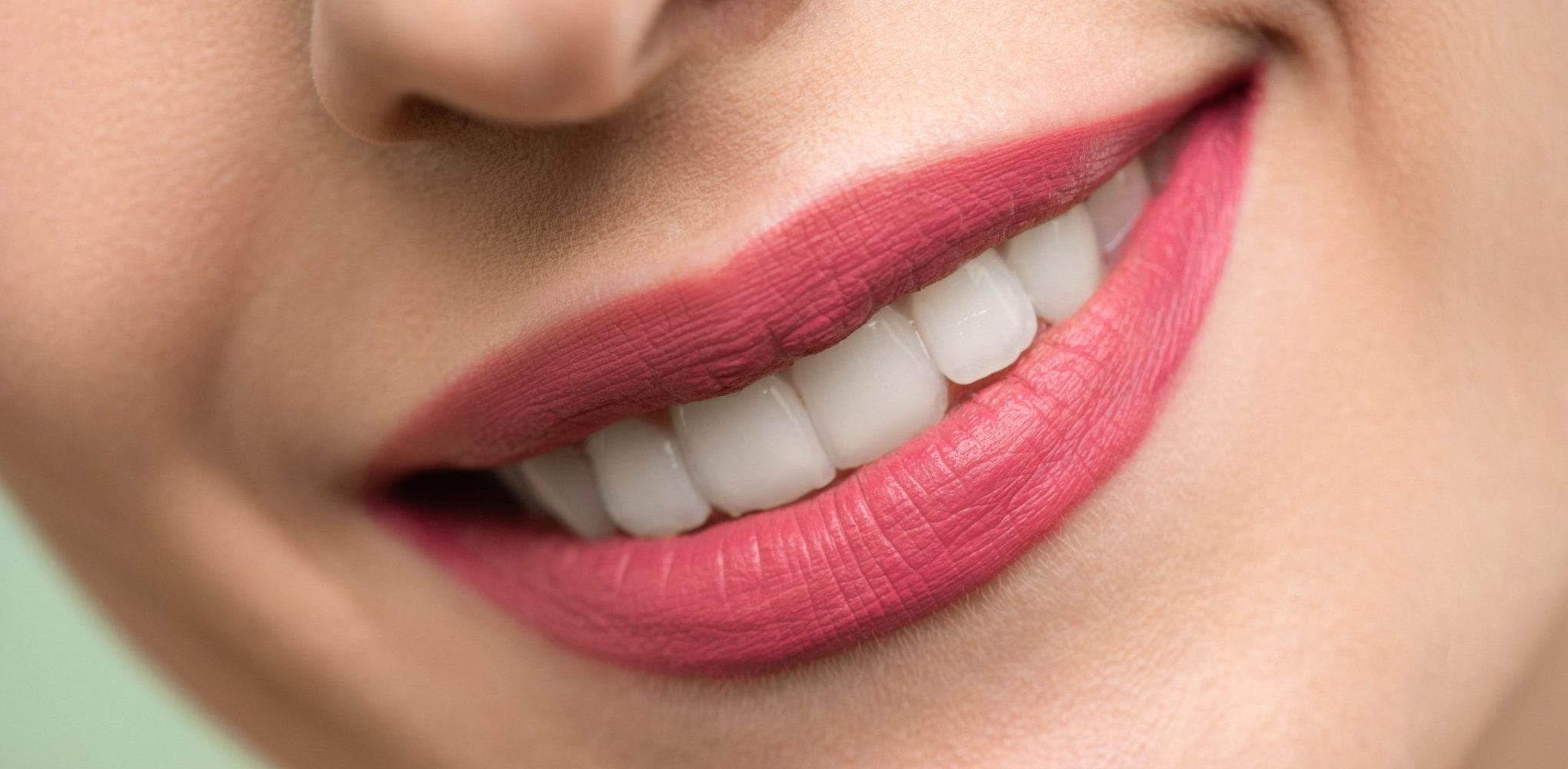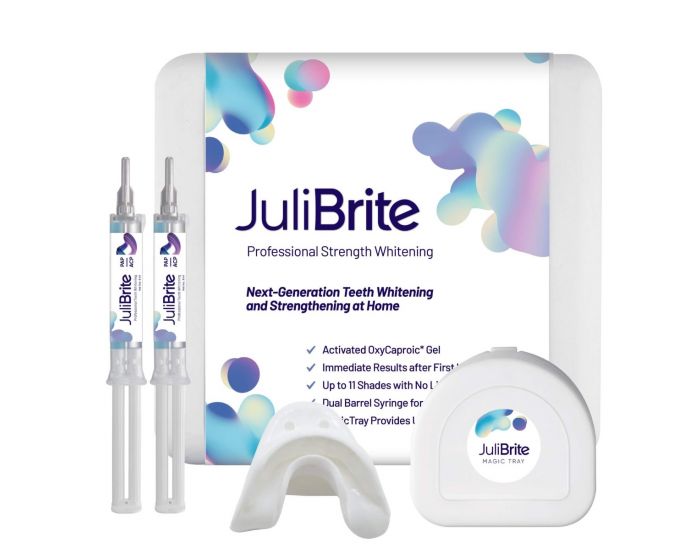White teeth in a non-harmful way
Teeth whitening is becoming very popular. Millions of people decided to undergo the teeth whitening process in order to improve their appearance. What is important to have a look at to achieve visible results and avoid harmful side effects at the same time?

Check the main teeth whitening ingredient
If you want to avoid sensitivity and possible damage of oral tissue, check what kind of bleaching element does the teeth whitening product of your choice include. The bleaching element is usually the main ingredient of the products and it is responsible for teeth whitening. That might be for example hydrogen peroxide (HP). Hydrogen peroxide (which usage has been already restricted by the EU), is a strong oxidising element. Therefore, it is very effective at teeth whitening. However, hydrogen peroxide (HP) can be toxic if swallowed and it also causes several damages to the mouth. Studies showed [1] that HP caused cervical resorption, pulp sensitivity, the release of selected components of dental restorative materials and alteration of the enamel surface in several cases. Moreover, the results of teeth whitening were temporary and repetition of treatment only intensified these effects [1].

Because of these damaging effects, the PAP bleaching formula was developed. PAP is a non-toxic, hydrogen peroxide-free whitening agent that has been scientifically proven to be effective for teeth whitening [2]. Its formula is mild and safe. PAP is an oxidizer that breaks up stain molecules, rendering them clear and invisible [3]. Research showed [2] that the concentration of 12% of PAP in teeth whitening gel used for teeth bleaching is so effective as the concentration of 8% of hydrogen peroxide but does not cause any harm in regular use [2].
Remineralising elements
Secondly, make sure that a teeth whitening product of your choice includes remineralising elements. Mineralisation of teeth enamel helps to prevent teeth sensitivity. One of the best mineralizing ingredients is Tricalcium Phosphate (ACP). This ingredient is natural and it protects and rebuilds tooth enamel [4].
Besides ACP, Hydroxyapatite (HAP) is very effective in the mineralisation process. Hydroxyapatite is a natural ingredient. Besides protecting tooth enamel it also rebuilds it if it was destroyed during the teeth whitening process. It releases calcium in dental biofilms and so remineralises tooth structures [5].

Natural preservatives like Potassium Citrate are also very important in order to protect your oral health. Potassium Citrate goes down into the tooth structure and through the soft layer of dentin provides the nerves with lasting protection from pain and sensitivity [6].
The best combination
After reviewing several studies we found out that the best combination for teeth whitening is PAP formula and mineralising substances [2,3]. It does not cause sensitivity or other dental health damages and it is very effective at the same time.
This combination of ingredients is included in JuliBrite At-Home Teeth Whitening Kit. This product is a favorite among customers because it is healthy, safe and reliable. Its bleaching gel consists of 20% PAP whitening agent + 3 remineralising elements making it very effective and safe for teeth at the same time. JuliBrite is a cost-friendly and effective option for everyone who wishes for a beautiful white smile that can make a very good impression on people around.
All in all, we wish you good luck in searching for the right option for you. Don´t forget to put your dental and general health in the first place. That is what matters the most to keep your smile beautiful for decades!
Sources
Make sure that information you read is fully reliable and based on professional and scientific studies. Find more about the topic in the following sources:
1 Goldberg, M., Grootveld, M., & Lynch, E. (2009). Undesirable and adverse effects of tooth-whitening products: a review. Clinical Oral Investigations, 14(1), 1–10. https://doi.org/10.1007/s00784-009-0302-4
2 Chen, Y., Min, W., Tan, L., Ruizhi, L. V., Chen, Y., & Qin, J. (2019, April). A bio-safety tooth-whitening composite gels with novel phthalimide peroxy caproic acid. ResearchGate. https://www.researchgate.net/publication/332286783_A_bio-safety_tooth-whitening_composite_gels_with_novel_phthalimide_peroxy_caproic_acid
3 J Appl Oral Sci. (2017). Effectiveness of a new non-hydrogen peroxide bleaching agent after a single use – a double-blind placebo-controlled short-term study. PubMed Central (PMC). https://www.ncbi.nlm.nih.gov/pmc/articles/PMC5804394/
4 Oldoini G., et al. (2018). Effects of amorphous calcium phosphate administration on dental sensitivity during in-office and at-home interventions. PubMed Central (PMC). https://www.ncbi.nlm.nih.gov/pmc/articles/PMC6313672/
5 Sarembe S., et al. (2020). In vitro whitening effect of a hydroxyapatite-based oral care gel. PubMed Central (PMC). https://www.ncbi.nlm.nih.gov/pmc/articles/PMC7440957/
6 Yates R., West, N., Addy, M., & Marlow, I. (1998). The effects of a potassium citrate, cetylpyridinium chloride, sodium fluoride mouthrinse on dentine hypersensitivity, plaque and gingivitis. A placebo-controlled study. PubMed. https://pubmed.ncbi.nlm.nih.gov/9797054/


